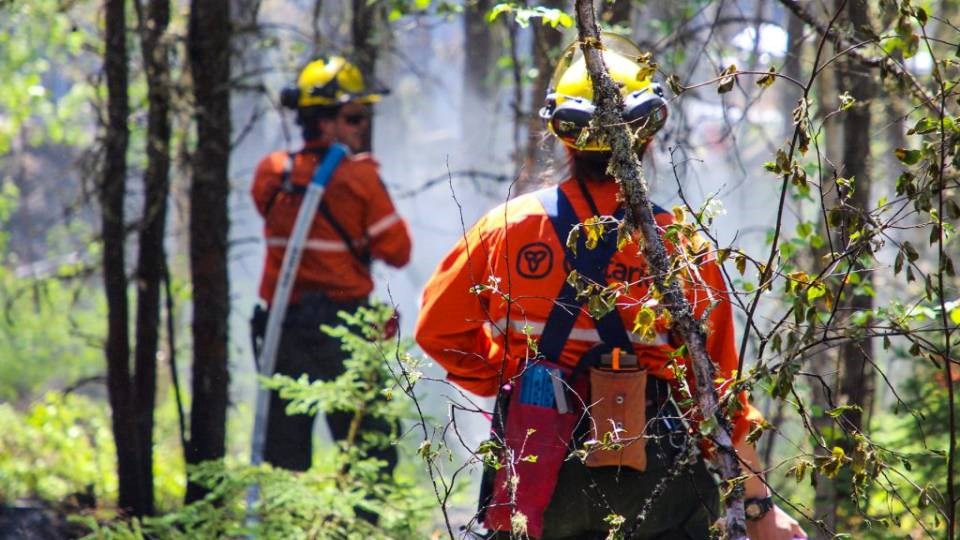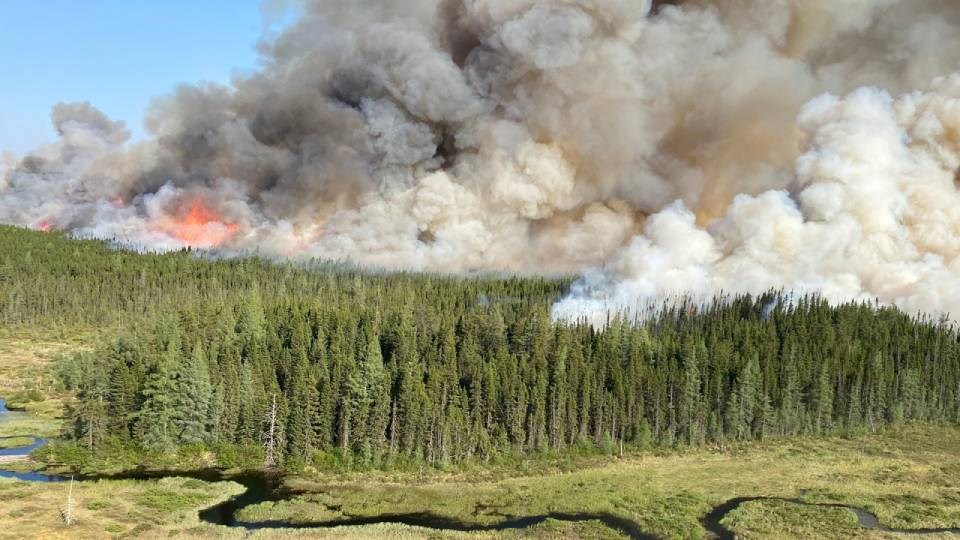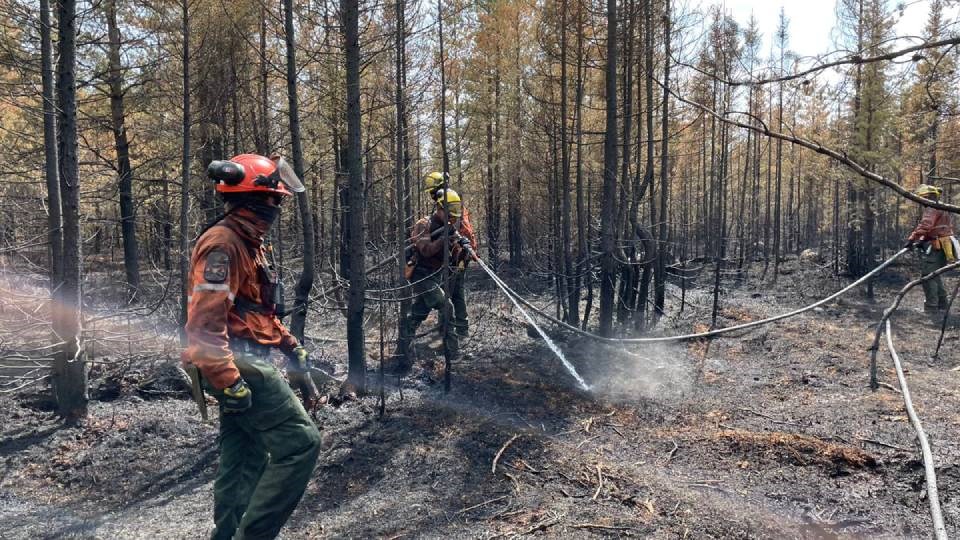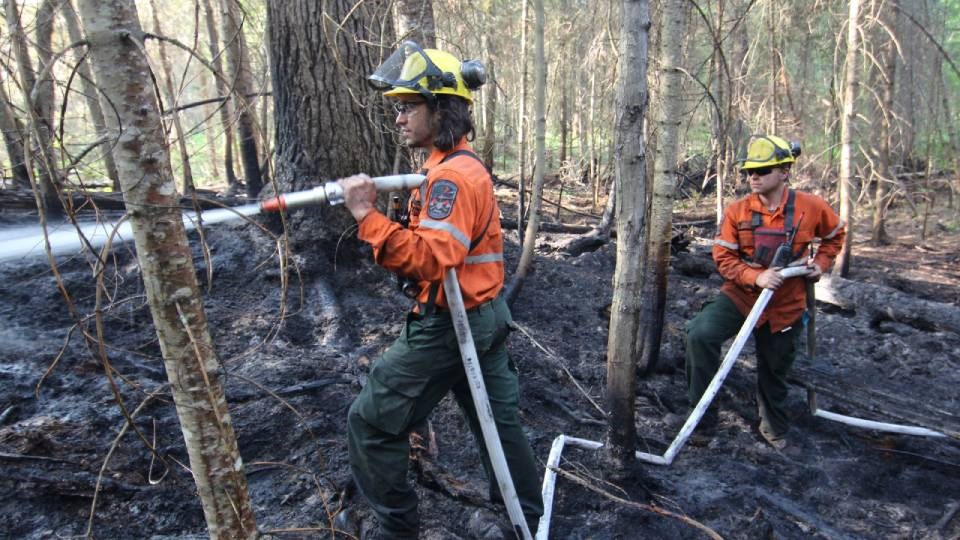An inability to attract enough new recruits is hampering the province’s ability to fight forest fires, says the head of the union representing Ontario’s forest crews.
Mark Belanger, president of OPSEU Local 713, told Northern Ontario Business that starting wages — and long-term employment opportunities with the Ministry of Natural Resources and Forestry — are one of the key hangups to getting more firefighters to the front lines.
It’s something that both sides are going to have to grapple with during negotiations, which are expected to reach a deal — either mutually agreed upon or imposed by a conciliator — by September.
“At the end of the day, you don't keep firefighters because you give them a certificate, you keep them because they can pay for what their families need,” Belanger said.
“We have staff who use food banks; we have staff who shop at stores like Salvation Army and Value Village,” Belanger said. “Not because it's chic. It's because they can't afford to shop in other locations to clothe and outfit their families.”

According to the OPSEU website, firefighters are paid $22 to $26 per hour despite working in high-risk conditions. The ministry hires several “fixed-term contracts and seasonally recurring positions” over the year, according to a provincial public service career portal.
“We hire specifically from college and university programs that are based on two- and four-year studies programs,” Belanger said. “But our main hiring base won't stay in our system long enough to ever get to the point that they're qualified.”
- Smoke from wildfires in Quebec is impacting air quality in Ontario
- 'A job from hell': Ontario is losing forest firefighters as blazes get worse
After the forest fire season, few full-time opportunities with the MNRF are available for graduates, Belanger said, meaning that good workers who’ve gained some experience move on.
“It's strictly now designed as a summer job,” he said. “It's really unfortunate because all of our knowledge is being encapsulated in people who will never stay.”
Most of those firefighters return to postsecondary schools, or find employment in different, more lucrative fields, he said. That means every season, crews are leaning on less-experienced staff to hold back the fires.
That’s a situation that could have serious ramifications for Ontario’s wildfire seasons.
Want to read more stories about business in the North? Subscribe to our newsletter.
According to statistics from the Canadian Interagency Forest Fire Centre, the number of hectares lost in Canada due to wildfires is up to 13,231,376 hectares so far in 2023, up from 1,467,970 in 2022.
With more demands placed on firefighters, the province is losing the people best-equipped to handle the escalating situation.
“It's very difficult to build supervisory capacity now,” Belanger said. “And it's extremely difficult to build situational awareness based on their exposure to fire.”
Belanger estimates it takes seven years of experience fighting wildland fires before a person can attain the rank of crew leader. But more and more people are being pushed through — “promoted through the system,” Belanger said — without the necessary experience.
“We were internationally recognized as professionals and highly knowledgeable and capable in boreal forest fire management,” he said. “But the province rested on those laurels for over a decade now.
“The people who worked hard to develop that are all gone, as well. So without having those people that keep coming back and building the system internally, we lose that recognition.”

At Northern College in Timmins, instructor Craig Hartley runs a small group of students through the path to become a municipal firefighter.
A small component of what he does touches on ground cover fire — most of the province’s wildfire training courses are handled by three colleges and several private companies — but these are the students who have chosen firefighting as a career.
Hartley said he’s always encouraging the students to sign up for forest fire crews, but the uptake isn’t always there.
“For them to look at leaving home and going to live in the bush with bugs and get dirty and actually do physical labour, there are not too many students that are willing to step into that,” Hartley said.
There are also concerns that the schedules for training courses offered by the province don’t sync up with college programs, Hartley said.
“My program goes until the first or second week of June, and wildland [teams] start their hiring in May,” he said.
“That means students are applying or taking this course in the fall, but there aren't any hirings then,” he said. “By the time a hiring comes around in May, they've already got into something else.
“I think it also has to do with numbers,” Hartley said. “I've heard of numerous years where courses are cancelled in our area, because they just didn't have enough applicants or those applicants are being told they’re not going to put the course on here because there aren’t enough people.
“So I think it's also a lack of people applying. It’s a numbers game.”
Although like other industries, the MNRF has been impacted by a highly competitive labour market, the agency is keeping a more optimistic outlook on the number of firefighters expected to rise through the ranks in coming years.
“The ministry is working to identify short and long-term strategies to address recruitment and retention within the wildland fire and aviation programs,” Marcela Mayor, an MNRF spokesperson said in an email to Northern Ontario Business.
“For example, the ministry took action last fall and earlier this year by enhancing its marketing of FireRanger and other jobs. We also announced for the 2023 fire season that MNRF would pay the cost of the SP100 training for any FireRangers that were hired.”

The Aviation Forest Fire and Emergency Services (AFFES) branch of the ministry also has a standing Recruitment and Retention Task Team, which monitors and makes recommendations based on trends.
“In 2023, MNRF hired approximately 661 FireRangers, which is well within our goal to hire between 500 and 800 FireRangers each year,” Mayo said.
“We employ hundreds of specialized staff to support fire operations. These include supervisors and managers, technicians, logistics, pilots, aircraft maintenance engineers, and administration services staff.
“Lastly, up to 320 additional firefighting personnel may be available from private contractors.”
The ministry also has mutual aid partnerships with municipalities and Indigenous communities, with other Wildland Fire Management agencies across Canada, and with other countries, Mayo said.
Those agreements can supply additional wildland firefighters, overhead fire management specialists, aircraft, and equipment as needed to support wildland fire response in Ontario.



